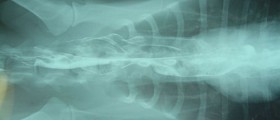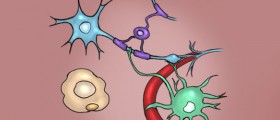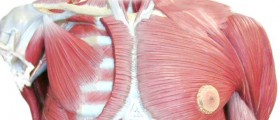
Myasthenia gravis is one of many autoimmune diseases affecting the neuromuscular tissue. The condition is chronic and leads to varying degrees of weakness of the skeletal muscles (voluntary muscles). Fortunately, even though once the condition occurs it remains for the rest of one's life, there are many treatment available. Most of them can efficiently bring all the symptoms and signs of the condition under control.
Muscle weakness
Myasthenia gravis is typically characterized by muscle weakness associated with periods of activity. Such weakness tends to improve drastically with adequate rest. The most commonly affected muscles in people suffering from myasthenia gravis include facial muscles controlling the eye and the eyelid movements, facial muscles in charge with expression, chewing, swallowing and talking. Still, weakness may also affect muscle that control breathing or limb movements.
Myasthenia Gravis Pathophysiology
In people suffering from myasthenia gravis there is a defect in the transmission of nerve impulses to muscles. So, the problem is located at the neuromuscular junction, a site where the nerve meets the muscle. This is the place where the nerve, with the assistance of nerve impulses, activates the muscle and initiates its contraction. Normal flow of nerve impulses is accompanied by a release of a neurotransmitter called acetylcholine. The neurotransmitter binds to specific receptors and activates a muscle contraction.
In case of myasthenia gravis, the body produces autoantibodies. These attach to the acetylcholine receptors at the neuromuscular junction and prevent neurotransmitter from reaching the receptors and initiating a muscle contraction. This explains muscle weakness.
Treatment Options for Myasthenia Gravis
Fortunately, there are several treatment options for myasthenia gravis capable of reducing the intensity of symptoms. They can also improve muscle weakness allowing patients to live their lives normally, participating in almost every activity they desire.
As for medications, myasthenia gravis is treated with anticholinesterase agents like neostigmine and pyridostigmine. If these drugs fail to provide with desirable effects i.e. if they fail to improve neuromuscular transmission and subsequently increase muscle strength, patients are prescribed other drugs like Prednisone, Cyclosporine and azathioprine. The last three drugs efficiently reduce abnormal reaction of the body and production of autoantibodies.
Thymectomy is a surgical removal of the thymus, a gland located in the mediastinum. In adult people this gland has no specific role and is practically inactive. However, it may be somehow associated with the onset of myasthenia gravis. This thesis has been proven in people who have been operated and whose symptoms have drastically improved once the gland has been removed from the body.

















Your thoughts on this
Loading...